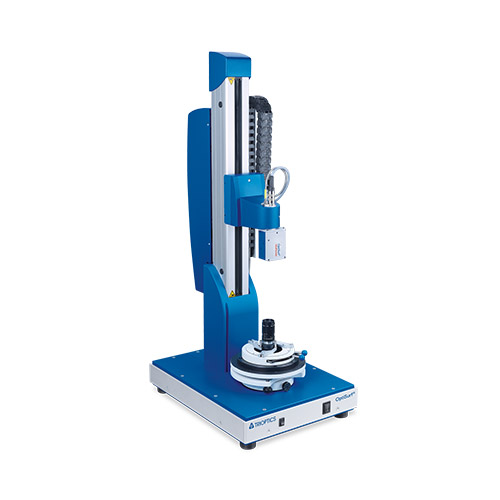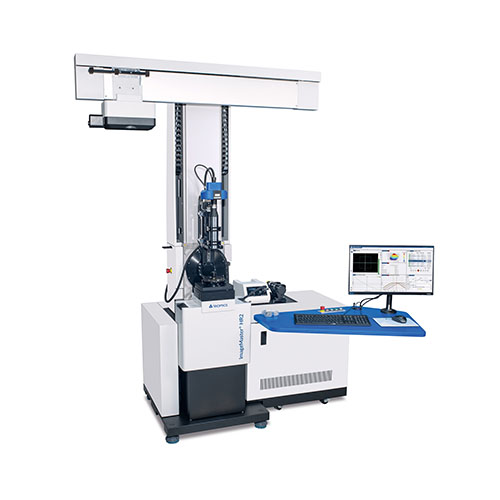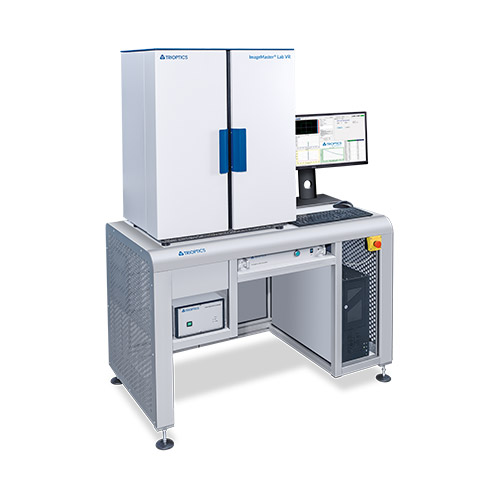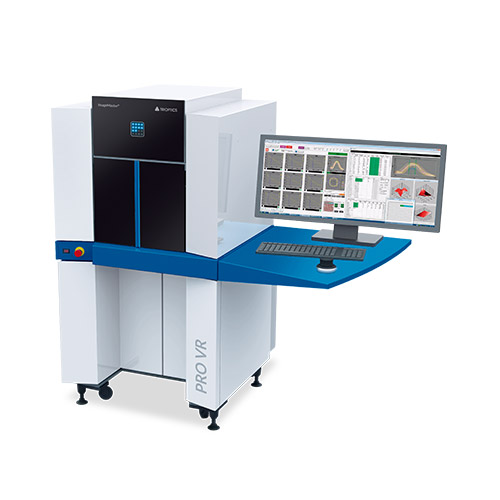Measurement of pancake optics
Polarizing technology for VR headsets?
The greatest challenge in the design of VR headsets is currently to achieve a very high imaging performance with a high level of wearing comfort at the same time. Thus, the weight and size of the headsets must be reduced. Therefore one focus is to reduce the thickness of the optics as well as the distance between optics and display.
The first headset models used Fresnel lenses. These have one advantage: They themselves are already very thin and light. Unfortunately, the required distance of more than 50 mm between the optics and the display is quite large. Furthermore, Fresnel lenses are very sensitive to stray light due to their edge structure.
A promising alternative approach is the use of pancake lenses. Although these are a bit thicker than Fresnel lenses, they can be positioned much closer to the display with a distance of less than 1 mm. Thus, they reduce the size of the VR lens system. At the same time, they improve the optical quality by eliminating the edge structure as they are less sensitive to stray light.
Interested in measurement solutions for pancake lenses?
What are the challenges?
Due to their complexity, pancake lenses present manufacturers with many difficulties. Errors are caused by unwanted reflection or transmission on the wrong surface. These become visible as haze, which reduces the contrast of the image as a whole, or ghost images, local image superimpositions of a part of the image. Thus, precise geometric positioning of all components is very critical. In detail, the following must be observed:
What has to be measured?
TRIOPTICS’ expertise in active alignment and optical metrology enables our customers to design and manufacture better pancake lenses for tomorrow’s challenges. During the manufacturing process and quality inspection, the following parameters are adjusted or controlled:
Discover our products
Knowledge Base
What are Pancake objective lenses?
Pancake lenses consist of two to four lenses. As a first optimization to enable high imaging quality, all lens surfaces have an aspherical profile. A new feature is that defined multiple reflections are used in the lens and the optical surfaces are thus used several times. This makes a more compact design possible. Polarization-selective and polarization-rotating coatings are used on the lens surface to intensify the light intensity in the desired beam path.
More knowledge for experts
Did this article inspire you? Are you looking for further knowledge transfer?
Then you might also be interested in the following topics …








